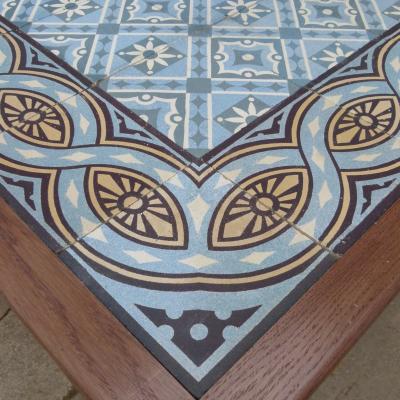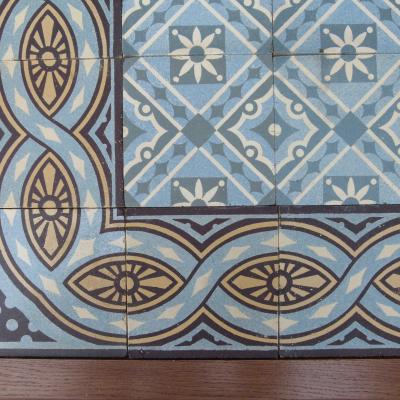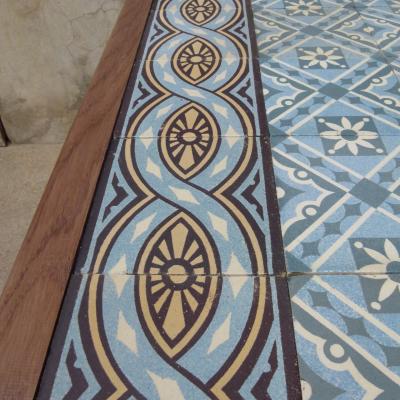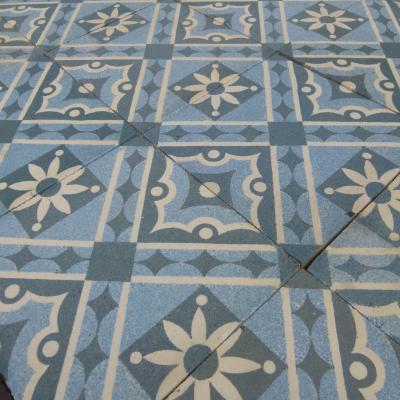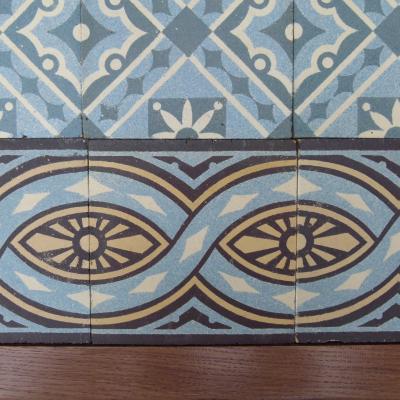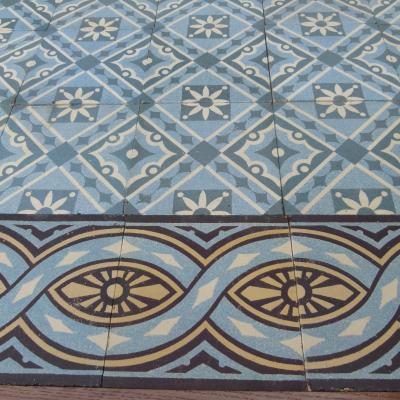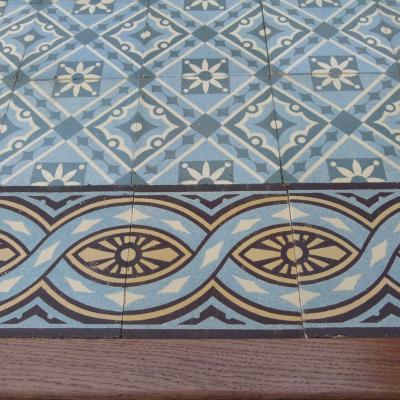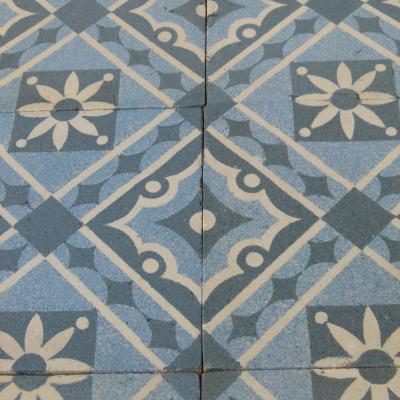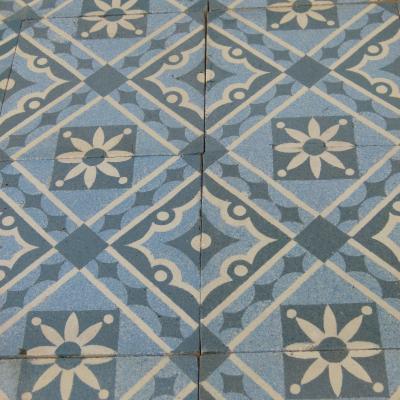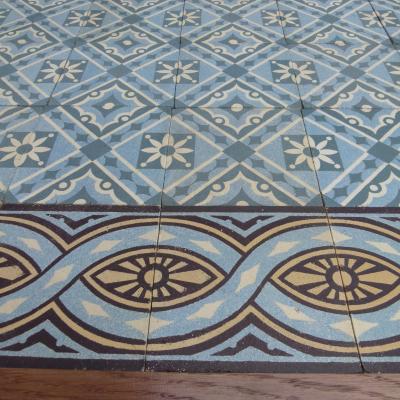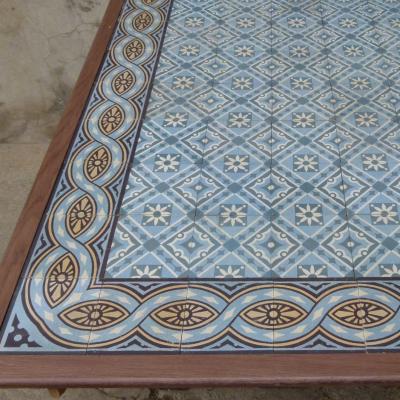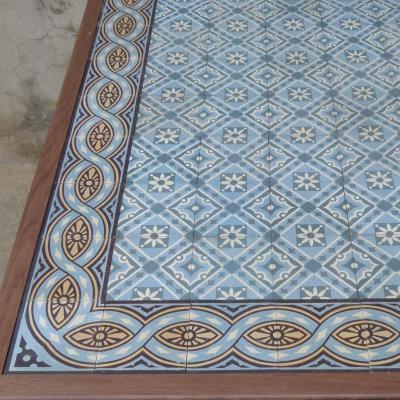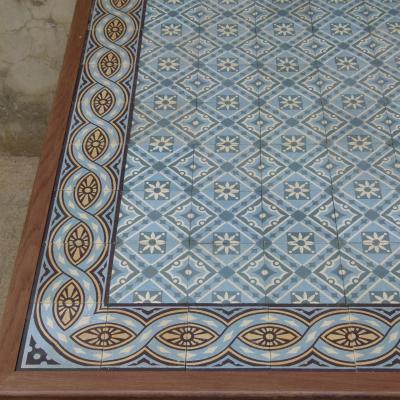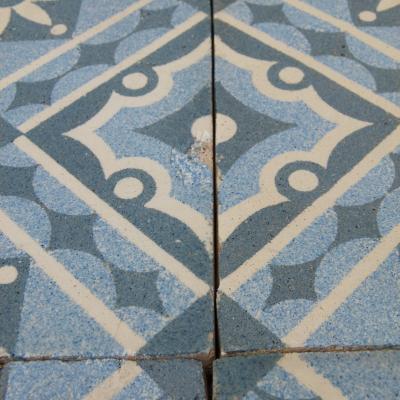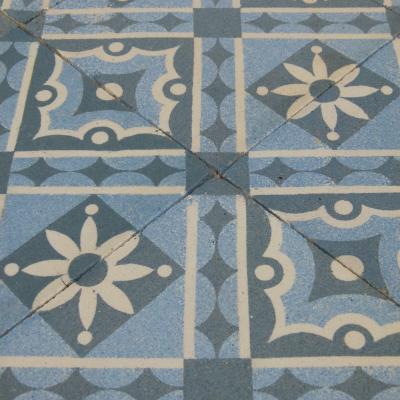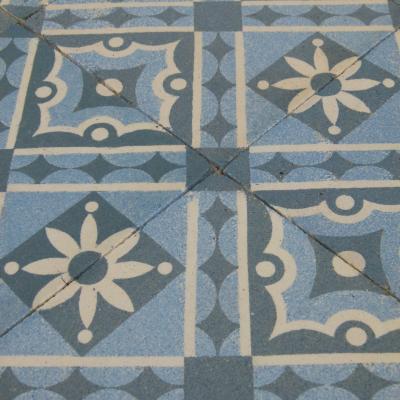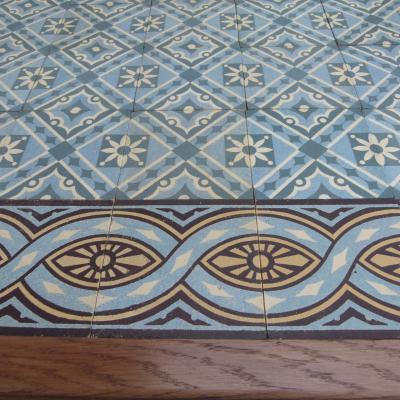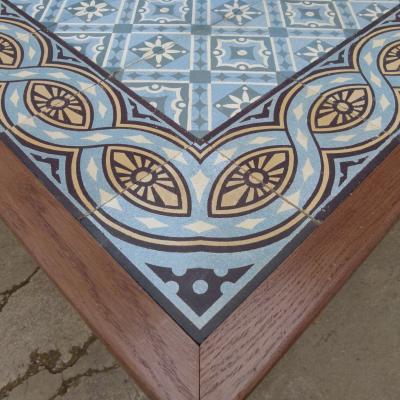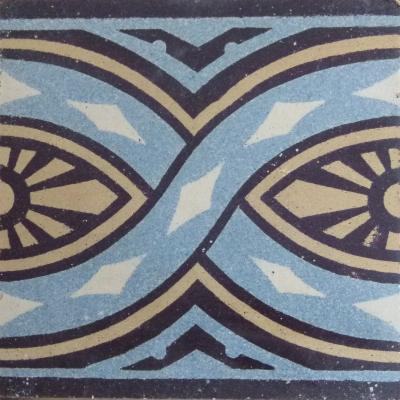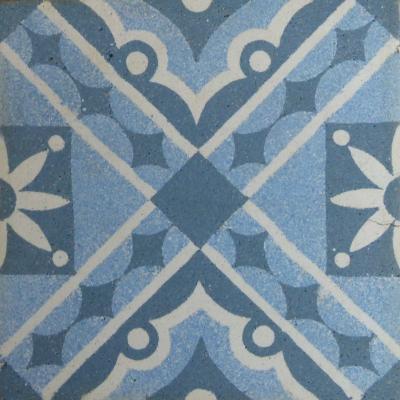An 8.2m2 antique Belgian ceramic with lush, fluid borders
An 8.2m2 / 88.2 sq ft, ceramic encaustic floor displaying a rich and beautiful antique patina, the floor comes complete with its original same size border tile and all four border corners.
The tiles bear the reverse inscription rings and 'M' identifying the floor as having been produced by Carrelages Céramiques de Chimay, Maufroid & Soeur, Rue Poncet, Bourlers, Henegouwen, Belgium, who later became: S.A. La Céramique de Bourlers. Maufroid Freres et Soeur traded as such between 1879 and 1912 and this floor originates from between the two dates. We have included in the photo gallery scans from their original period catalogue presenting the tiles.
Made by hand in small batches, these 16cm sq ceramics have been reclaimed from the entrance hall of property renovation close to Namur, Belgium. The palette is cool in blues and greens and the geometric field tile design is complimented by a same size border which is indulgent, fluid and ornate. The floor is easy on the eye.
Having cleaned well of its old lime based mortar and years of ingrained dirt the floor reveals a good slip on a quality ceramic and colours that are consistent and vibrant as the photographs of around a 1m2 random section of the floor show.
This is a highly fired tile, fired to over 1,100 degrees, and consequently suitable for laying inside or outside of the home as well as with underfloor heating systems where they will be excellent retainers and distributors of heat.
Tile quantities by tile type:-
Field tiles - 225 - 5.75m2 / 62 sq ft
Large border tiles - 85 plus 4 corners (2.4m2 / 26 sq ft) or 14.2 linear metres / 46.7 linear feet
NOTE:-
Antique tiles were most commonly made in single or two tile moulds. Before current computer automation methods their moulds were made my hand and the colour slips mixed by eye. Kiln temperatures could also be variable, as could the firing time. The result is that often tiles display subtle size and thickness variations and there can be tonal variations in colours, owing to the slip mixing and/or firing time. All of this makes these handmade tiles unique and adds to their charm. Some floors display their subtle variations in size and tones, some not, but when photographing we always take a random section of the floor so that it is representative of the whole. A tiler should always dry lay a section of the tiles to familiarise himself with them before starting to fix lay.
CL197



